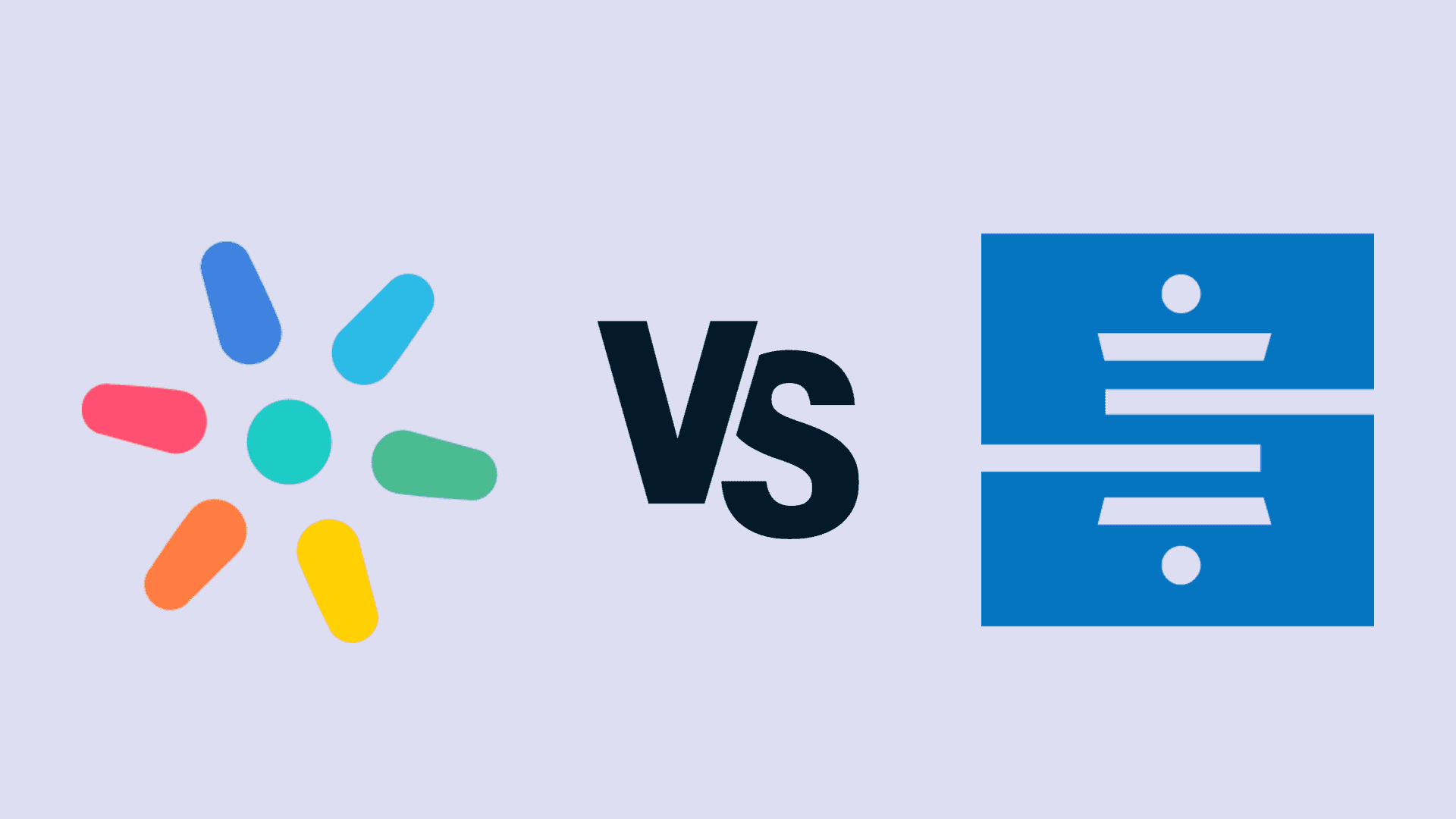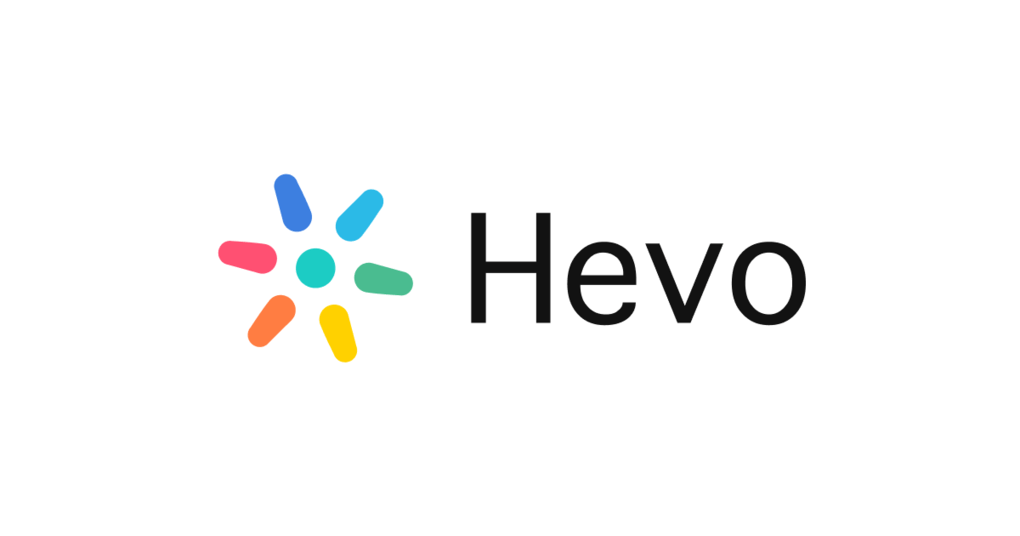
As huge volumes of data are being generated every day, efficient data movement becomes essential to unlock the true potential of data. Inefficient data transfer can result in data silos, which is why organizations leverage ETL and ELT tools to automate data movement for further analysis. Two popular choices in this space are Hevo and Stitch, both of which provide robust platforms with impressive data integration capabilities. However, understanding their unique features and differences is crucial in selecting the perfect fit for specific business needs. Let's dive in!
Hevo Data Overview
Hevo Data is a bi-directional data pipelines platform specifically designed for modern ETL, ELT, and Reverse ETL requirements. It addresses the challenge of fragmented data by enabling you to integrate and consolidate information from various disconnected sources and applications. By seamlessly connecting data from sales CRM, advertising channels, marketing tech, financial system software, and customer support products, Hevo enables you to build a 360-degree view of your customers.
Hevo Data offers two primary products to cater to different data integration requirements.
Hevo Pipeline: Hevo Pipeline is a powerful and comprehensive data pipeline automation solution. It enables you to streamline the process of transforming and integrating diverse data from various sources into your data warehouses. It simplifies the ETL process, allowing you to efficiently pull data from any source in near real time.
Hevo Activate: Hevo Activate is a reverse ETL platform. With Hevo Activate, you can move data from your data warehouse to the targeted CRM application. By using Hevo Activate, you can build robust SQL queries that unify this diverse data and prepare it for seamless integration with your CRM application. Currently, it only supports HubSpot and Salesforce.
Here are some of the key features of Hevo:
Automated Schema Management: Hevo's Automated Schema Management feature automatically generates the schema for the destination data based on the source data. It ensures that the destination schema stays synchronized with any changes in the source data, regardless of how the source data evolves over time.
Pre-Load Transformation: With Hevo, you have control over how data is loaded into your warehouse. Hevo offers two types of transformations: drag-and-drop and Python-based transformations. You can perform various transformations like cleaning, formatting, standardizing, or filtering the data on the fly before it is loaded into the destination. These transformations do not impact the performance of the data loading process.
Post-Load Data Transformation: Once the data is loaded into your data warehouse, you can perform transformations to enhance the data for further analysis. Then you can seamlessly transfer this data to a third-party analytical tool like Power BI. With Hevo you can define custom data transformations, aggregations, or any other data manipulation tasks to streamline the analytics process. This enables you to automatically prepare the data for analytics as soon as it arrives in the warehouse.
Hevo API: The Hevo API enables easy integration of Hevo into your existing data workflows. You can trigger your pipelines, perform any pipeline action, or access pipeline data without having to visit the Hevo dashboard. This allows for seamless integration of Hevo with your data infrastructure and automation of data processing tasks.
Stitch Data Overview
Stitch is a cloud-native, open-source platform designed to facilitate the fast and efficient movement of data. It specializes in replicating data from 140+ data sources and transferring it to a destination of your preference. Stitch primarily operates as an ELT (Extract, Load, Transform) solution. However, you can carry out basic transformations, like data type conversion, so that the data can be stored in the destination. But, if you want to perform complex transformations, you can use Talend, the parent company of Stitch.
Stitch Data was acquired by Talend in 2018, and subsequently, Talend itself was acquired by Qlik in 2023, making both Talend and Qlik parent companies of Stitch Data.
Here are some of the key features of Stitch Data:
Stitch Import API: Import API allows you to send data directly from a source to Stitch. It acts as a receiver and processes incoming data in real time or batch. Data sent to the Import API is processed and sent to your destination through Stitch just like any other integration. The Import API accepts JSON or Transit requests and returns JSON responses for all of its methods. Each method uses standard HTTP verbs like GET/POST and standard HTTP response codes for returning statuses. The Stitch API handles bulk and incremental updates of our data with ease.
Singer Framework: Singer is an open-source framework that allows data engineers to create integrations, called taps. Taps define the extraction and transformation rules for replicating data from any source to any destination. By leveraging Singer, Stitch enables you to build customized integrations that meet your specific data replication requirements.
Hevo vs Stitch: Comparison
Hevo and Stitch have distinct strengths and challenges. Understanding the differences between these platforms can help you choose the one that aligns best with your specific data integration requirements.
Hevo vs Stitch: Integration Capabilities
Hevo provides support for 300+ connectors, including a wide range of SaaS applications, payment gateways, advertising platforms, and analytics tools. It offers a comprehensive repository of pre-built integrations for popular data sources and it actively adds new data sources to its repository based on customer requests. It means even if a particular data source is not currently supported, customers can request to add it.
Stitch supports 150+ connectors, including popular databases, SaaS applications, cloud platforms, and more. Stitch also allows customers to build new sources by following the standards in Singer, an open-source framework for writing scripts. So, you can create custom integrations for data sources that are not already supported by Stitch. However, you must be familiar with Singer and have the programming skills to accomplish this task.
Hevo vs Stitch: Transformation Capabilities
Hevo Data is primarily an ETL (Extract, Transform, Load) solution that allows you to easily extract data from various sources, apply transformations, and load it into the desired destination. With Hevo you can choose between drag-and-drop transformations or Python-based transformations. While drag and drop transformations provide a set of predefined operations, Python-based transformations allow you to write custom transformation scripts using Python code. These options provide you with flexibility and ease of use, allowing you to choose the most suitable method for your data transformation needs.
On the other hand, Stitch Data is primarily an ELT platform, focusing on extracting data from various sources and loading it into the destination without extensive transformations. While it offers basic transformation capabilities like translating data types, its core strength lies in its ELT approach. However, you can use Talend for transformation workloads. Talend provides options for transforming data either within the data warehouse itself or by utilizing external processing engines like Spark and MapReduce. Transformations can be defined in SQL, Python, Java, or via graphical user interface.
Stitch vs Hevo: Support for Reverse ETL
As Stitch Data prioritizes ELT operations it does not offer native reverse ETL capabilities. However, by leveraging the capabilities of Talend, the parent platform of Stitch Data, it is possible to achieve reverse ETL functionality, enabling you to move data from your data warehouse and load it back into your SaaS applications.
On the other hand, Hevo Data supports reverse ETL through Hevo Activate. With Hevo Activate, you have the ability to move data from destinations such as Hubspot and Salesforce. You can then apply the necessary transformations for data enrichment and effortlessly load it back into your operational systems.
Stitch vs Hevo: Customer Support
When it comes to customer support, Stitch Data offers three channels for customer service: in-app chat support, email, and phone support exclusively for Enterprise users. Users can ask questions and receive answers from the Stitch Data team or other users through the community forum. Whereas, Hevo Data offers round-the-clock support to all users, allowing them to access live chat and email assistance at any time, regardless of their subscription plan.
Hevo vs Stitch: Pricing
Hevo offers three pricing plans:
Free Plan: This plan allows users to move small volumes of data from business tools at no cost. It includes 1 million free events and 50 selected connectors.
Starter Plan: Billed annually at $239/month, it offers the ability to move all data from databases and business tools. The pricing scales based on the number of events.
Business Plan: This plan offers custom pricing tailored to specific requirements. It includes all the features of the Starter Plan and additional capabilities such as multi-region workspaces, HIPAA compliance, and dedicated support.
Stitch offers three pricing plans:
Standard Plan: Starts at $100/month and is suitable for individuals starting with data ingestion. The pricing varies based on the number of rows ingested per month.
Advanced Plan: Billed annually at $1,250/month, it offers advanced features and is designed for teams that require more control and extensibility of their data pipelines.
Premium Plan: Billed annually at $2,500/month, it is targeted at fast-growing organizations with high data volumes, offering best-in-class security and compliance.
Hevo Data vs Stitch Data: Choosing the Right Data Integration Solution
Determining which one is better between Hevo Data and Stitch Data depends on your specific needs and requirements. Both platforms offer data integration and movement capabilities, but it's important to understand their core functionality.
Hevo Data is ideal for organizations that require robust ETL and reverse ETL capabilities. With Hevo Data, you can perform various transformations on the data to ensure it is in the desired format for further analysis or storage. It provides robust capabilities for cleaning, formatting, and standardizing data during the ETL process. For simple transformations, you can use drag-and-drop transformations, and for complex transformations, you can use custom Python-based transformation scripts.
On the other hand, Stitch Data is well-suited for ELT use cases, specializing in efficient and reliable data movement between sources and destinations. Its core strength lies in delivering consistent and fast data transfers. With Talend’s acquisition of Stitch and then Qlik’s acquisition of Talend, you can also leverage the capabilities of all three companies to enhance your data analytics and transformation processes.
Overall, Hevo Data provides an all-in-one ETL solution for data extraction, loading, and transformation, whereas Stitch Data primarily focuses on ELT. It's recommended to try out free trials of both Hevo Data and Stitch Data to get hands-on experience and make an informed decision based on your business requirements.
Estuary: The Alternative Real-Time Data Integration Solution
Estuary Flow, a powerful real-time data integration platform, is another alternative. It combines change data capture and batch with streaming transformations as part of its real-time ETL offering. Its unique stream storage enables a true cloud elastic scale, making it suitable for workloads of all sizes. This flexibility is especially beneficial for businesses handling fluctuating workloads or anticipating data volume growth.
With 150+ real-time and batch connectors built and optimized by Estuary, and support for most connectors from Airbyte, Meltano, and Stitch, you can unify databases, SaaS applications, and pub/sub systems in real-time or batch with ease. And if you can’t find the connector you’re looking for, you can place a request with the Estuary team for a new connector for the system.
Apart from the standard ETL capabilities, Estuary Flow also offers a comprehensive data transformation layer. You can manipulate and refine your data in flight while using Flow.
Here’s a comparison table summarizing the differences between Hevo, Stitch, and Estuary.
Hevo | Stitch | Estuary | |
Processing Method | Batch | Batch | Real-time and Batch |
| Connectors (Source and Destination) | 300+ | 150+ | 150+ from Estuary Support for 500+ Airbyte, Stitch, and Meltano connectors |
Data Source Authentication | OAuth / HTTPS / SSH / SSL / API Tokens | API Tokens / OAuth / SSH Keys | OAuth 2.0 / API Tokens |
Custom Connector | No | Yes | Yes |
CLI | No | Yes | Yes |
API | Yes | Yes | Yes |
Scalability | Yes | Yes | Yes |
Conclusion
In the realm of data integration and analytics, Hevo and Stitch emerge as strong contenders. By understanding their unique features and differences, you can make an informed decision when selecting the right solution. Hevo Data is a comprehensive platform suitable for organizations that require robust ETL and reverse ETL capabilities, with powerful data transformation functionalities. On the other hand, Stitch Data excels in efficient data movement for ELT scenarios, and its integration with Talend adds transformation capabilities.
While Hevo and Stitch offer compelling features, both lack support for real-time data replication which is a crucial requirement in today's competitive world. If you are looking for real-time ETL and ELT capabilities, try Estuary Flow! It provides a comprehensive all-in-one platform that seamlessly integrates your sources and destinations with real-time data streaming.
Take the next step in optimizing your data workflows and start using Estuary Flow today, your first pipeline is free!
Looking for more insights into data integration solutions? Dive deeper into comparisons between Hevo Data and other leading platforms by exploring these additional blogs:
- Explore how Hevo Data stacks up against Airbyte in our comprehensive comparison: Hevo Data vs. Airbyte
- Hevo Data vs. Fivetran
- Discover the advantages of cloud ETL tools and see how Hevo Data measures up: 15 Best Cloud ETL platforms to try

About the author
With over 15 years in data engineering, a seasoned expert in driving growth for early-stage data companies, focusing on strategies that attract customers and users. Extensive writing provides insights to help companies scale efficiently and effectively in an evolving data landscape.











